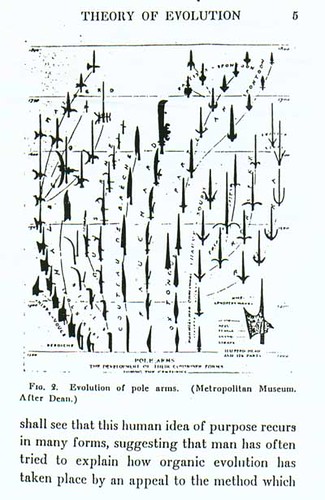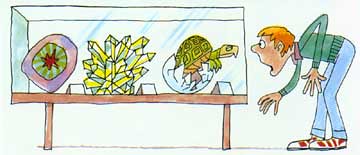With the comments function shut off for now, perhaps it is time for Fort Kant to propose its first meme.
The philosophers and mathematicians of Moritz Schlick’s “Circle” (later known as the “Vienna Circle”) studied Wittgenstein’s
Tractatus by voting on the truth or falsity of its key propositions. A copy of the voting results from these sessions—taken by Carnap, if I remember right, in scrupulous colored pencil—was passed around in my first-year philosophy of science seminar, under strict conditions specified by the Special Collections department. The group voted on selected propositions, read the entire book aloud, voting as they went, and voted a third time when they were finished. (The charts were labeled:
Vor dem Tractatus,
Während dem Tractatus (
dem not
des, because
während takes a dative object in Austrian German), and
Nach dem Tractatus.)
It is in a similar logico-positivistic spirit that I propose to consider the truth or falsity of each of Badiou’s
Fifteen Theses on Contemporary Art. Here’s the meme: cut and paste the theses from this link and vote true, false, abstain, or write-in candidate for each. Multi-part theses can be divided and considered separately; they can also be confronted with a single vote. Explanations optional.)
Before I begin, let me note that there’s going to be some friction here. Badiou states, “All the 15 theses have as a sort of goal, the question how not to be formalist-Romantic. That is, in my opinion, the question of contemporary art.” By now it ought to be clear enough to readers of this page that Fort Kant is primarily concerned with the opposite question, how to be formalist-Romantic.
Having noted this, we proceed:
1. Art is not the sublime descent of the infinite into the finite abjection of the body and sexuality. It is the production of an infinite subjective series through the finite means of a material subtraction.
True; false. The infinite series couldn’t be subjective—what kind of subject could comprehend an infinity of contents?—but it could be objective; the work refers endlessly outward, but we finite knowers light on only this or that constellation of referents. Material subtraction: if what we are subtracting from in creating the
means of an artwork is
everything there is, I guess I can agree with this.
 2.
2. Art cannot merely be the expression of a particularity (be it ethnic or personal). Art is the impersonal production of a truth that is addressed to everyone.
True; false.
3. Art is the process of a truth, and this truth is always the truth of the sensible or sensual, the sensible as sensible. This means: the transformation of the sensible into a happening of the Idea.
False.
4. There is necessarily a plurality of arts, and however we may imagine the ways in which the arts might intersect there is no imaginable way of totalizing this plurality.
Write-in, from Wallace Stevens in
The Necessary Angel:
There is a universal poetry that is reflected in everything. This remark approaches the idea of Baudelaire that there exists an unascertained and fundamental aesthetic, or order, of which poetry and painting are manifestations, but of which, for that matter, sculpture or music or any other aesthetic realization would equally be a manifestation.
Maybe the write-in candidate fails to describe contemporary art, but I think it says something true about the unity of the
formal imagination in its manifold presentations. (Not all imagination is formal, and not all art is concerned with aesthetic experience.) In any case, having Baudelaire—an expert on psychedelic syntheses of experience—on one’s side is powerful evidence for one’s claims about the imagination.
5. Every art develops from an impure form, and the progressive purification of this impurity shapes the history both of a particular artistic truth and of its exhaustion.
True.
6. The subject of an artistic truth is the set of the works which compose it.
False. The work is necessarily
composed of other works, but they aren’t its (only)
subject. This can be seen as a Kantian point: to confuse the constituent parts of something (e.g., a judgment) with its purport is a crude empiricist mistake.
But: true if you take “the works which compose it” to refer to
everything there is, i.e., “the works.”
7. This composition is an infinite configuration, which, in our own contemporary artistic context, is a generic totality.
False, but only on account of the dependent clause. Maybe it’s perverse to use a Leibnizian monad as a counterexample, but we’ll try it: a monad is an infinite configuration, but not a generic totality. Each monad contains in its complete concept everything in the world, but it apperceives these various contents with differing degrees of vivacity—these differences in apperceptive vivacity are what individuate monads. Totality, yes; generic, no. I intend this to be a recasting of a point
Alphonse continually helps us to understand: a concept/representation/product may contain its own negation, but the self-negation isn’t thereby granted an equal claim to truth.
8. The real of art is ideal impurity conceived through the immanent process of its purification. In other words, the raw material of art is determined by the contingent inception of a form. Art is the secondary formalization of the advent of a hitherto formless form.
True; false (there are no raw materials); false. Maybe the last proposition says that art aims to make a novel form out of prior forms—I think that’s true and innocuous. But those prior forms, taken collectively,
do already have a form over and above their individual forms. And that form is…
9. The only maxim of contemporary art is not to be imperial. This also means: it does not have to be democratic, if democracy implies conformity with the imperial idea of political liberty.
False, whether the first sentence is taken as descriptive or normative.
10. Non-imperial art is necessarily abstract art, in this sense: it abstracts itself from all particularity, and formalizes this gesture of abstraction.
False.
11. The abstraction of non-imperial art is not concerned with any particular public or audience. Non-imperial art is related to a kind of aristocratic-proletarian ethic: Alone, it does what it says, without distinguishing between kinds of people.
False.
12. Non-imperial art must be as rigorous as a mathematical demonstration, as surprising as an ambush in the night, and as elevated as a star.
True. (And if you take off “non-imperial,” this could be Wallace Stevens.)
13. Today art can only be made from the starting point of that which, as far as Empire is concerned, doesn't exist. Through its abstraction, art renders this inexistence visible. This is what governs the formal principle of every art : the effort to render visible to everyone that which for Empire (and so by extension for everyone, though from a different point of view), doesn't exist.
False. Too optimistic about the existence of a starting place Empire hasn’t claimed in some way—isn’t Thesis 5 clear enough about this? And it seems bizarre that such a starting place should be claimed for art—isn’t the economic shape of the gallery world sufficient proof of the aesthetic flexibility and omnivorousness of Empire? Art may or may not succeed in going somewhere, but it begins in the middle of things. And the measure of whether art goes somewhere can’t be whether it can be appropriated by Empire, for all the best things can be.
14. Since it is sure of its ability to control the entire domain of the visible and the audible via the laws governing commercial circulation and democratic communication, Empire no longer censures anything. All art, and all thought, is ruined when we accept this permission to consume, to communicate and to enjoy. We should become the pitiless censors of ourselves.
First proposition: true.
Second proposition: false. (Busted again for liberal irony! I can’t hide it.)
Third proposition: abstain. I agree to a certain sort of caution, but “we should become the pitiless censors of ourselves” just sounds like the sort of thing one would eventually come to regret having said.
15. It is better to do nothing than to contribute to the invention of formal ways of rendering visible that which Empire already recognizes as existent.
False. Get over it—Empire
knows. Empire recognizes it in advance, and Empire can handle it. But don’t let that stop you.
And now I’d like to pass the mic…








